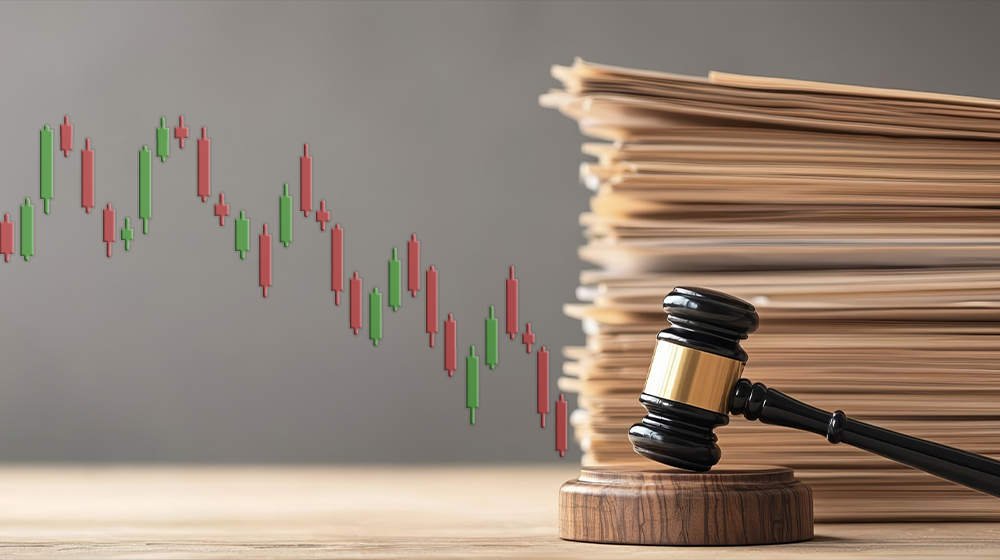Introduction to Technical Analysis
Have you ever noticed how some traders consistently identify the best times to buy or sell? Their success often isn’t about luck but rather their use of technical analysis. This tool is invaluable, whether you’re a beginner or an experienced forex trader, enhancing your ability to make informed trading decisions.
The Foundation of Technical Analysis

Technical analysis is a methodology that evaluates trading instruments by analysing statistical trends gathered from trading activity, such as price movement and trading volume. Unlike fundamental analysis, which looks at economic factors and company metrics, technical analysis focuses solely on price movement, incorporating the analysis of historical price data to determine market prices and market trends.
History of Technical Analysis
The origins of technical analysis can be traced back to the Dutch markets in the 17th century, when early traders began to observe and interpret price patterns and market trends. However, it wasn’t until the late 19th century that technical analysis began to take on a more structured and systematic form, thanks to the pioneering work of Charles Dow.
Charles Dow, a financial journalist and co-founder of The Wall Street Journal developed a series of theories that laid the foundation for modern technical analysis. His work, now known as Dow Theory, emphasised the importance of tracking price movements and trading volume to understand market behaviour. Dow believed that markets move in predictable phases, reflecting the collective actions of investors and traders responding to economic conditions, market sentiment, and other factors.
Understanding Market Cycles
One of the fundamental concepts of technical analysis is the market cycle. Markets move in predictable cycles, and recognising these cycles enables traders to make better predictions about when a market might change direction.
Forex Technical Analysis Strategies
1. Trend Following Strategy
This strategy involves identifying the prevailing market trend and making trades that align with this trend. Its simplicity makes it one of the most popular and effective strategies in forex trading.
Key Indicators Used:
Moving Averages (MA)
Simple Moving Averages (SMA) and Exponential Moving Averages (EMA) are commonly used to determine trends. Traders may use a single MA or multiple MAs with different time frames to spot trend reversals or confirmations.

Average Directional Index (ADI)
It quantifies trend strength. Values above 25 typically indicate a strong trend, giving traders confidence in following the indicated direction.
Application
Technical traders typically buy when the price is above a major moving average and sell when it’s below. Additionally, the crossover of short-term and long-term moving averages can signal entry or exit points.
2. Trend Following Strategy
Effective in markets that lack a clear trend, range trading strategy relies on identifying stable high and low-price points to form support and resistance levels.
Key Indicators Used
Relative Strength Index (RSI)
This momentum oscillator helps identify overbought or oversold conditions. Levels typically set at 70 (overbought) and 30 (oversold) can indicate potential reversal points within the range.

Stochastic Oscillator
Similar to the RSI, it compares the closing price of a currency to its price range over a certain period of time to identify potential reversal points.

Application
Traders use these indicators to buy near the support level and sell near the resistance level, or vice versa if they expect a breakout.
3. Scalping Strategy
Scalping is a strategy used in very short time frames. It aims to profit from small price changes by making high-volume trades throughout the day.
Key Indicators Used
Bollinger Bands
This tool uses standard deviations to calculate a moving average and then plots two price channels above and below. Scalpers often buy when the price touches the lower band and sell when it hits the upper band.
Volume Indicator
High volume is a strong confirmation tool in scalping, ensuring the price moves are significant enough to trade.
Application
Scalpers must be very responsive and often employ an automated trading system to take advantage of the quick opportunities that arise.

4. Breakout Strategy
This strategy involves identifying a range or a consolidation on a chart and trading in the direction of a sharp movement when the price breaks out of this range.
Key Indicators Used
Volume Indicators
A breakout accompanied by high volume suggests the move is significant and has momentum.
Donchian Channels
These can be used to visualise the volatility and breakout points by showing a trading period’s highest highs and lowest lows.
Application
Traders look for the price to close outside the defined range on significant volume, indicating a potential continuation of the breakout trend.
5. Swing Trading Strategy
Swing trading involves taking trades that last from a day to several weeks to capitalise on expected upward or downward moves in the market.
Key Indicators Used

MACD (Moving Average Convergence Divergence)
This indicator helps find changes in a price trend’s strength, direction, momentum, and duration.

Fibonacci Retracement
Used to identify likely retracement levels following a strong market move. Swing traders look to these levels to make entry and exit decisions.
Application
Swing traders use MACD to confirm the trend direction of Fibonacci levels before making a trade.
Understanding Technical Indicators
Technical indicators are crucial tools in a trader’s arsenal. They help predict future market activities based on past patterns. They can be categorised into four main types: trend, momentum, volatility, and volume indicators.

Trend Indicators
Trend indicators are essential for identifying and confirming the direction of market trends, allowing traders to align their positions with the prevailing market momentum.
Moving Averages (MA)
These are fundamental trend indicators used to smooth out price fluctuations over a specified period, thereby creating a single line that reflects the overall direction of the trend. Traders often utilise different periods for moving averages (such as the 50-day and 200-day MAs) to gauge both short-term and long-term trend directions. The crossover of these moving averages can signal potential buy or sell opportunities.
Ichimoku Cloud
More complex than simple moving averages, the Ichimoku Cloud provides a richer visual representation of the trend, momentum, and potential support and resistance areas. The cloud is composed of several lines that include the Tenkan-sen, Kijun-sen, and the lagging span, offering a comprehensive view of market dynamics. The cloud’s shading indicates potential support or resistance areas, aiding traders in making more informed decisions.
Momentum Indicators
Momentum indicators are crucial for understanding the speed of price changes and identifying potential extremes where the price might be overbought or oversold.

RSI (Relative Strength Index)
The RSI measures the speed and change of price movements to indicate overbought or oversold conditions. Typically, an RSI above 70 suggests an overbought market, potentially priming for a downturn, while an RSI below 30 indicates an oversold market, which might be ready to rebound.
MACD (Moving Average Convergence Divergence)
This indicator is used to spot changes in the strength, direction, momentum, and duration of price trends. The MACD consists of two lines: the MACD line, which represents the difference between two exponential moving averages (typically the 12-day and 26-day EMAs), and the signal line, which is the EMA of the MACD line. Crossovers of these two lines can signal potential buys or sells.
Volatility Indicators
Volatility indicators measure the rate of price movements, regardless of direction, helping traders to understand the stability or instability of the market.
Bollinger Bands
This indicator consists of a set of three lines: the middle line is typically a 20-day simple moving average flanked by two standard deviation lines. These bands expand and contract based on market volatility. Narrow bands suggest low volatility, while wide bands indicate high volatility, providing trade signals based on the price’s relative position to the bands.
Volume Indicators
Volume indicators are used to determine the strength of a price move based on volume activity, providing insights into the pressure behind a price trend.
On-Balance Volume (OBV)
This indicator uses volume flow to predict changes in stock price. An increasing OBV suggests buyers are willing to step in and push prices up, while a decreasing OBV indicates that sellers dominate.
Tools and Techniques of Technical Analysis
The effectiveness of technical analysis hinges on both the choice of tools and the proficiency with which they are used:
Charting Software
Platforms like MetaTrader and TradingView are indispensable for modern traders. They provide a wealth of features, including various chart types and a comprehensive set of technical indicators to analyse price action trading thoroughly.
* The tools mentioned are shared for informational purposes only. JP Markets doesn’t specifically recommend them and encourages traders to assess whether they suit their needs.

Pattern Recognition
Identifying chart patterns is fundamental in technical analysis. Techniques to spot patterns like candlestick configurations, trend lines, and key support and resistance levels are crucial. These patterns help traders predict potential price movements and make more informed decisions.
Understanding the Boundaries of Technical Analysis
Technical analysis can be a powerful tool, but it’s not foolproof. Markets are unpredictable, and past trends don’t always lead to future results. Relying too much on technical analysis without considering other factors can lead to missed opportunities or unexpected losses.
It’s best to see it as one part of a larger strategy. Combining it with other approaches, staying flexible, and being aware of its limitations can help you make more balanced and informed trading decisions.
Combining Indicators for Enhanced Analysis
Combining various indicators can provide a more accurate analysis by confirming trends and potential market turns:

Using Trend and Momentum Indicators Together
For instance, a moving average might show a trend direction. At the same time, the RSI can indicate if the trend is nearing an overbought or oversold condition, which may suggest a potential reversal or pullback.
Cross-Verification
Before making a trading decision based on one indicator, use another indicator to confirm the signal. For example, an RSI exiting an overbought one can confirm a MACD crossover to validate a sell signal.
Chart Patterns and Risk Management
Understanding chart patterns is more than just recognising shapes on a graph––it’s about interpreting these formations to predict future market behaviours accurately. Common patterns such as the Head and Shoulders, Double Tops, and Double Bottoms are crucial for traders. These patterns can indicate potential reversals or confirmations of ongoing trends, providing traders with insights to help guide their trading decisions.
For instance, a Head and Shoulders pattern might suggest a reversal of an uptrend, while a Double Bottom could indicate the strengthening of a support level.


In addition to pattern recognition, effective risk management is fundamental to successful trading. Techniques such as setting stop-loss orders are essential for limiting potential losses, allowing traders to exit positions at predetermined price levels without constant market monitoring. Managing leverage is also critical; while it can amplify gains, excessive leverage can just as easily magnify losses. Thus, understanding and controlling leverage is vital for safeguarding one’s investment capital.
Combining Technical and Fundamental Analysis
Blending technical and fundamental analysis lets traders harness the strengths of both. While technical analysis helps you grasp market trends and timing, fundamental analysis deepens your understanding of economic conditions and company performance. This combo not only boosts your confidence but also sharpens your trading decisions.
To effectively marry technical and fundamental analysis, start with the big picture using fundamental insights—think economic indicators and earnings reports. Then, zoom into the technical side to pinpoint the best times to enter or exit trades. This strategy ensures that your trading moves are well-supported by broad economic narratives and specific market signals.

Psychological Aspects and Continuous Improvement
Trading is as much about keeping your cool as it is about knowing your charts. The essentials for a trader’s mental toolkit? Emotional control, discipline, and patience. Staying calm when the market gets stormy, sticking to your plan, and not going wild with trades can make or break your success.
Remember, the trading world never sleeps. It’s constantly evolving with new tech, fluctuating market conditions, and big economic news hitting the wires. Staying on top of these changes is key. That means always learning, constantly updating your strategies, and really getting the hang of global economics.
Disclaimer: Trading forex comes with risks, and you can lose more than you invest. Make sure you understand the risks fully and consider getting advice if you’re unsure.
Apply Technical Analysis with Confidence at JP Markets
JP Markets provides a safe and regulated space for you to grow as a trader. With FSCA oversight, you can confidently work on your technical analysis and make informed choices. Explore our tools and resources to help you on your journey. Keep in mind, trading success comes from learning, staying disciplined, and being aware of the risks.
Frequently Asked Questions (FAQs)
Q: What is technical analysis?
A: Technical analysis is a way to study price movements and trading volume to predict future trends. It focuses on charts and patterns rather than economic data.
Q: How does it help traders?
A: It helps traders spot trends, key price levels, and the best times to enter or exit trades. It’s a useful tool for making better trading decisions.
Q: Does it guarantee profits?
A: No, markets are unpredictable. Technical analysis helps improve your chances but doesn’t ensure success. It’s best used with other methods like fundamental analysis.
Q: What are the main tools used?
A: Some common tools include:
- Trend Indicators (e.g., Moving Averages)
- Momentum Indicators (e.g., RSI)
- Volatility Indicators (e.g., Bollinger Bands)
Q: Can I use technical analysis with other strategies?
A: Yes, combining it with fundamental analysis gives you a better overall view of the market and helps with timing your trades.
Q: How do I manage risks?
A: Consider setting up stop-loss orders to limit losses and avoid using too much leverage. Always have a plan and stick to it.
Q: How can JP Markets help?
A: JP Markets provides a secure and regulated trading environment, tools, and resources to help you improve your technical analysis and trade confidently.




